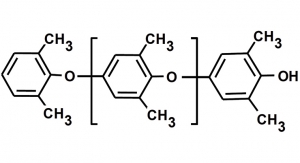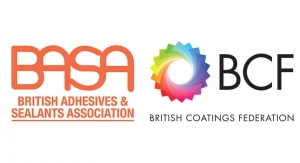03.15.18
In 2019, the substance-specific concentration limits for methylisothiazolinone (MIT) will be reduced in many applications. Products that are preserved with MIT then have to be labeled with additional hazard warnings. Therefore, companies should prepare to changeover to alternative active ingredients for paints, varnishes, adhesives as well as washing and cleaning products in a timely manner.
"The trend is moving away from MIT, given these significant constraints", said David Zilm, sales manager at Vink Chemicals. “Particularly sector affected are the uses for in-can preservation and cooling lubricant additives for the metalworking.
“However,” Zilm continued, “a simple reduction of the active ingredient is not the solution, as this poses more risks. For example, too low concentrations can cause bacterial resistances. We therefore offer a wide variety of combinations as alternatives."
Methylisothiazolinone is a proven preservative that has been used successfully for many years in paints, varnishes, adhesives, washing, care and cleaning products. However, the EU has classified mixtures which contain MIT as skin sensitizing according to Category 1A and therefore have set a new substance-specific concentration limit of 15 ppm.
The new limit is valid from 2019, this corresponds to a significant reduction of the current level of 100 ppm. Therefore, a mixture containing MIT at a concentration of 15 ppm or higher must then be marked with the hazard warning H317 "May cause an allergic skin reaction.” “For Do-It-Yourself applications, the hazard statement H317 is simply unthinkable," Zilm said.
As methylisothiazolinone is not effective with an active substance content below 50 ppm, alternatives are necessary. Vink Chemicals has excellent active substance formulations within its product range which do not require the hazard warning H317. One example is Vinkocide KN, a combination product of benzisothiazolinone (BIT) and sodium pyrithione. Vink Chemicals recommends biocides users to take advise on preparation processes and suitable alternatives soon and use the time before the transition for compatibility and efficacy testing. We offer a complete all-round service on this subject for the manufacturers of lacquers, paints, adhesives, washing and cleaning products.
"The trend is moving away from MIT, given these significant constraints", said David Zilm, sales manager at Vink Chemicals. “Particularly sector affected are the uses for in-can preservation and cooling lubricant additives for the metalworking.
“However,” Zilm continued, “a simple reduction of the active ingredient is not the solution, as this poses more risks. For example, too low concentrations can cause bacterial resistances. We therefore offer a wide variety of combinations as alternatives."
Methylisothiazolinone is a proven preservative that has been used successfully for many years in paints, varnishes, adhesives, washing, care and cleaning products. However, the EU has classified mixtures which contain MIT as skin sensitizing according to Category 1A and therefore have set a new substance-specific concentration limit of 15 ppm.
The new limit is valid from 2019, this corresponds to a significant reduction of the current level of 100 ppm. Therefore, a mixture containing MIT at a concentration of 15 ppm or higher must then be marked with the hazard warning H317 "May cause an allergic skin reaction.” “For Do-It-Yourself applications, the hazard statement H317 is simply unthinkable," Zilm said.
As methylisothiazolinone is not effective with an active substance content below 50 ppm, alternatives are necessary. Vink Chemicals has excellent active substance formulations within its product range which do not require the hazard warning H317. One example is Vinkocide KN, a combination product of benzisothiazolinone (BIT) and sodium pyrithione. Vink Chemicals recommends biocides users to take advise on preparation processes and suitable alternatives soon and use the time before the transition for compatibility and efficacy testing. We offer a complete all-round service on this subject for the manufacturers of lacquers, paints, adhesives, washing and cleaning products.
















